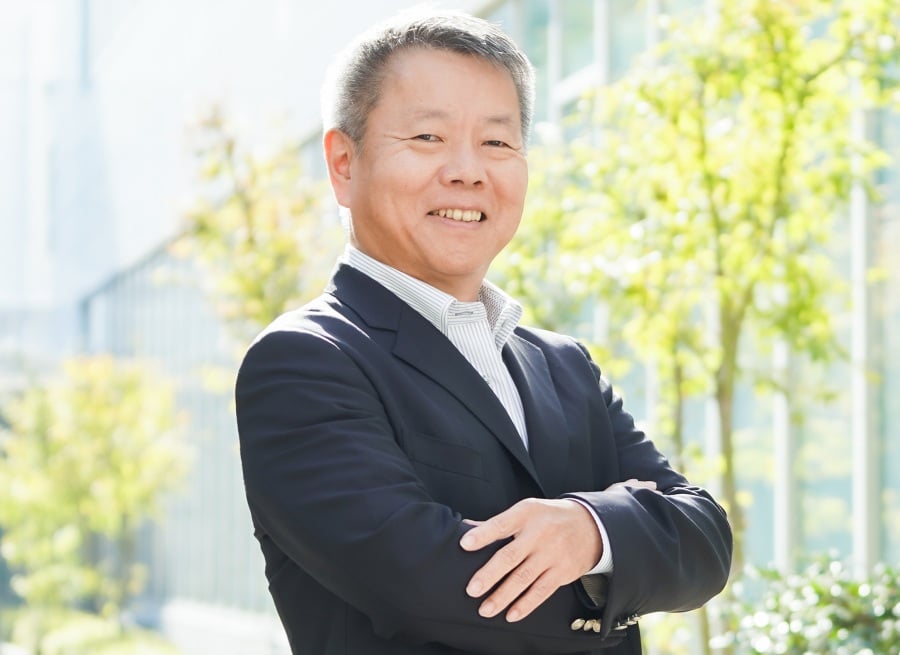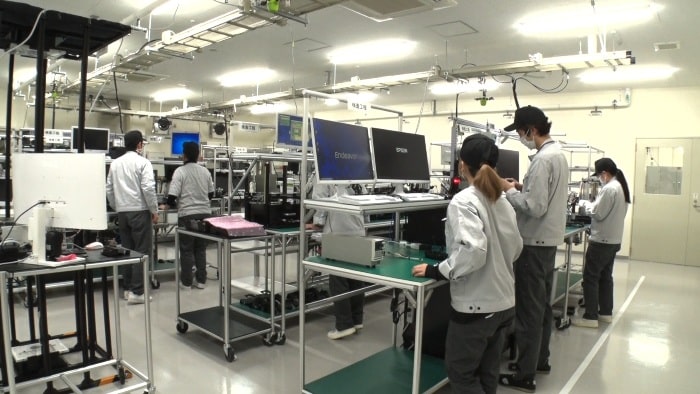The power of truth: Hear from the Executive VP of i-PRO


James Thorpe
Share this content
ISJ speaks exclusively with Masami Eguchi, Executive Vice President, i-PRO about how edge analytics are transforming video surveillance.
When it separated from Panasonic in 2022, i-PRO took with it a 60 year legacy of innovation. Combining that with an open strategy and a focus on edge analytics has resulted in the company introducing seven times more new products in a year than it did under its former parent.
More importantly, those products are paving the way for transformative video surveillance.
i-PRO’s Executive Vice President, Masami Eguchi, has played a key role in the company’s success and strategy. Following a decade at Panasonic in Japan, he led the launch and building of i-PRO’s regional businesses and teams in EMEA and APAC.
He is now based at i-PRO Americas’ Houston, Texas headquarters.
In this exclusive interview with ISJ, we got to hear his perspective on trends, the speed of AI’s evolution, changing mindsets on privacy and i-PRO’s approach to the growing range of integrator and end user requirements worldwide.
When you look at the security industry today, what do you see that helps to guide your business and development strategy?
We see two primary drivers of the surveillance and security industry today.
One is that demand is growing – both for cameras and for full solutions. Second, specifically for cameras, we see a growing demand for higher resolution and analytics.
The resolution need is straightforward – people buy cameras to see what’s going on and who’s involved. If their legacy cameras aren’t delivering the truth they need, they’re modernising. The demand for analytics is tied to the growth in the sheer number of cameras.
People simply can’t watch them all and analytics help them do that.
With object recognition, now they can be alerted if someone enters an area where no-one should be.
Advancements in analytics and resolution have also drastically reduced the number of false alarms, as cameras can now distinguish between a human, a dog and a blowing leaf – instead of just motion – and trigger responses appropriately.
The demand for resolution and analytics stems from the move from analog to IP. AI is just accelerating it. The security camera business used to be about recording.
People had cameras to collect footage to investigate. Now it’s about taking action.
Cameras have become like humans’ eyes and brains; they see something and ‘think’ something. That allows people to take action, and, if it happens fast enough, even prevent things from going wrong.
How do higher resolution and analytics impact security businesses from a revenue perspective?
Security companies that provide guarding services tend to be labour-intensive businesses. If they adopt i-PRO AI technology, for example, the cost might be about one third of putting a human guard on site; the accuracy of detection would improve considerably.
For example, one operator may be able to monitor about 60 locations instead of 20, increasing revenue. At the same time, it could lower the price of the service and make the security company more competitive.
Reducing false alarms is also an opportunity.
Eliminating misdetection and taking the right action against threats helps build customers’ trust in a provider’s services.
Looking forward, what technologies and trends do you think will bring about the next wave in video surveillance and security?
The convergence of AI and edge processing is already showing us the next wave of transformative analytics for security cameras.
The bandwidth required to transport images and video, particularly when they’re high resolution, is somewhat limiting the use of analytics right now.
Moving those images is costly and cumbersome. Technology like future advanced mobile services, with lower cost, will help drive demand and use of security cameras with analytics.
But, as we know, people aren’t able to watch all of these camera streams. And analytics help with that. You could process video analytics on a backend server.
The computing power required is massive and expensive because each video stream has to be decompressed and analyse as a separate process.
The more cameras, the more costly it is to scale the compute resources needed.
Companies have to plan for an ongoing investment, especially as demand for video rises. Also, video analytics require high speed processing.
To be useful and enable people to take action as incidents happen, video analytics need to quickly retrieve information from the video stream.
That’s where edge processing comes in.

The way i-PRO has deployed edge processing on our cameras allows them to instantly detect, classify and analyse the behaviour of objects before the video even leaves the camera.
The harvested information is very small compared to the video so it can travel to humans much faster.
The cloud, with all of its computing power, can introduce significant delays that hamper instantaneous responses if it has to analyse video streams on the fly, run analytics and issue a timely alert.
That is why we invested heavily in edge analytics as a development direction when we established our new company. Edge analytics is what takes analytics from possible to practical.
The majority of network cameras installed today don’t have AI features.
It’s technically possible to send all those streams to servers for external AI processing, but it can be cheaper, faster and more secure to process some of those non-AI streams on the edge using existing AI cameras.
The newest cameras from i-PRO, our X-Series, are powerful enough that they can analyse not only their own video streams, but also analyse and extract AI attributes from traditional, non-AI IP cameras, even those from other manufacturers.
We’ve standardised on the Ambarella SoC with efficient compression, low power consumption and outstanding image quality.
With this power, organisations can make non-AI cameras smarter, more efficient and able to trigger real time alerts.
What actions are you taking to help customers and integrators transform to this new landscape? To minimise the impact of cyber-attacks and use AI responsibly?
It’s clear that manufacturers must do more to help secure cameras and educate on best practices. i-PRO focuses on guiding customers around what we believe are the four foundational elements of any IoT security program: Resiliency, cyber-hygiene, product security and proper configuration.
Product security, particularly the security features on the devices themselves, is where manufacturers have the biggest responsibility. Many IoT devices, especially low end products or those made by companies less invested in the security industry, don’t have built-in security features.
i-PRO’s products do – like encryption, authentication and support for secure network standards like 802.1x. We are also diligent about fixing any security flaws that may be reported.
We have adopted cybersecurity as a pillar of corporate responsibility to help customers safeguard business continuity. This isn’t a new concept; security by design is part of i-PRO’s DNA.
In terms of responsible AI, within our own company i-PRO has established Ethical Principles for AI to balance the advancement of AI technology with social responsibility and to uphold ethical and social considerations.
These principles guide all i-PRO employees when engaged in the use of AI in operations such as research and development, manufacturing and services.
We are a global company and we deeply respect human rights – and we work with partners who share this ethic.
As the ability to capture and apply metadata advances, so do regulations and controls around improper use of this technology.
i-PRO supports the responsible use of AI.
You mentioned earlier that demand is growing for both cameras and full solutions. How are you handling the ‘solution’ side of that demand?
That is one of the biggest things we aimed to change in becoming a standalone company. We continue to offer full solutions, but the way we approach that demand has changed significantly.
As part of Panasonic, we made only complete solutions – software, hardware, network components, everything. But the market for full solutions left out many organisations that didn’t need all of that.
Under that strategy, we weren’t able to develop products fast enough to meet a range of demands.
Instead, with i-PRO, we took an ‘open policy’ strategy from day one.
This means that in addition to offering our camera, low TCO Video Insight VMS and MonitorCast access control system integrated with Video Insight, we also collaborate with partners to provide best of breed solutions.
We reached out to former competitors and aggressively rebuilt relationships with VMS vendors, AI analytics vendors and integrators.
Today those relationships are a source of pride. We work with trusted, reliable partners like Genetec, Milestone and others, who have the capabilities that meet customer demand continuously.
It’s a step-by-step engagement, from technology integrations to business integrations, to practical level service and support.
Our goal with the open policy is to create an ecosystem where AI can flourish and customers can quickly and easily access advancing technology.
In focusing our own development, one decision we made was to expand our manufacturing centre in Japan and move nearly all of our development there, next to our R&D hub.
This allows us to rapidly produce a range of customised camera products with delivery times far quicker than competitors. To offer transformative products, we needed to transform our company.
With incredible partners at our side and edge analytics at the core of our tech, we are working to transform video surveillance.



